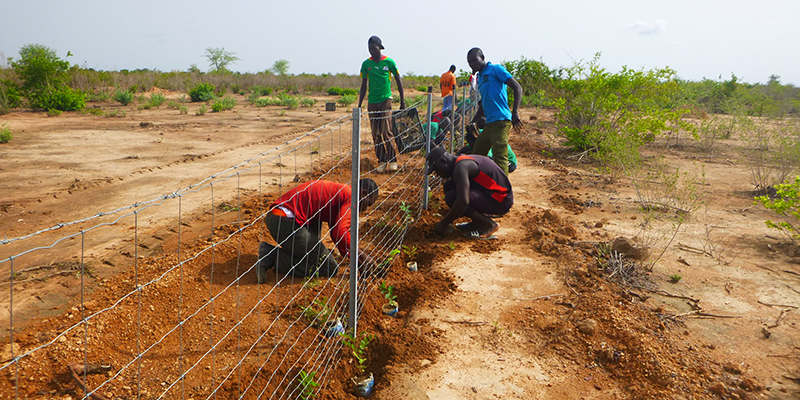On World Day to Combat Desertification observed globally on Saturday, June 17, 2017 the International Union for the Conservation of Nature (IUCN) explores how conserving soil biodiversity can make dryland communities more resilient to drought and other threats, and prevent desertification

Conserving soil-dwelling worms, insects and bacteria is not the first thing that comes to mind when we talk about nature conservation. In fact, in dryland areas like the Sahel, most biodiversity is found beneath the earth’s surface – and conserving it is crucial for water and food security.
Drylands like grasslands and savannahs are particularly vulnerable to environmental degradation. Overgrazing and unsustainable farming combined with climate change can quickly turn a productive dryland into a wasteland.
Much of the reason why healthy soils are more fertile can be found underground.
A typical healthy soil might contain several species of vertebrate animals and earthworms, over 20 species of mites,over 50 species of insects, tens of species of nematodes, hundreds of species of fungi and thousands of species of bacteria.
In drylands most species are found underground where they form interdependent communities. These communities are responsible for some of the most important earth-regulating cycles: water, carbon and nitrogen. They influence the capacity of soil to infiltrate and store water and they determine the overall fertility and productivity of the land.
Termites, for example, create pores in the soil and recycle large amounts of decaying vegetation. If we take their total weight, termites are by far the largest animal living on the Savannah.
Healthy, living soils promote water security. Every gram of organic matter can increase soil moisture by 10-20 g, and the capacity of soil to capture and store water declines rapidly when soil biodiversity is lost. But water can be managed to adapt to scarcity and variability.
Healthy soils also mean more food security. Soil contributes to the production of 95% of all our food and, according to the Food and Agriculture Organisation (FAO), by sustainably managing soils we could produce up to 58% more food. This is roughly the same as the projected increase in food production needed to feed the world population in 2050.
By helping local people return to traditional farming and grazing methods IUCN works to conserve biodiversity both above and below the ground, making drylands more productive and sustainable.
In the Sahel, IUCN is promoting sustainable land management as part of the Great Green Wall, a Pan African initiative to restore a vast swathe of drylands that support millions of farmers and pastoralists. A book on this project will be launched later this year.
In Burkina Faso IUCN is supporting the expansion of sustainable land management practices to create more resilient dryland livelihoods.
For example, farmers plant seeds in small pits known as zaï, filled with organic manure, to concentrate water and nutrients at a plant’s base. By introducing organic matter to the soil they help preserve fertile, living soils, contributing to food security.
In Kenya, IUCN is helping manage land in a way that allows for traditional grazing practices, where “dry season pastures” are set aside to act as a buffer in periods of drought. By conserving vegetation above ground, they are also protecting soil biodiversity that helps retain moisture.
Healthy, living soils also help mitigate climate change by storing carbon. It is estimated that soils can sequester around 20 petagrams of carbon in 25 years – more than 10 % of the anthropogenic emissions.
In sub-Saharan Africa, where a large part of the economy depends on rain-fed subsistence agriculture, desertification and human poverty are inextricably linked. Conserving life both above and below the Earth’s surface must be part of the solution.
